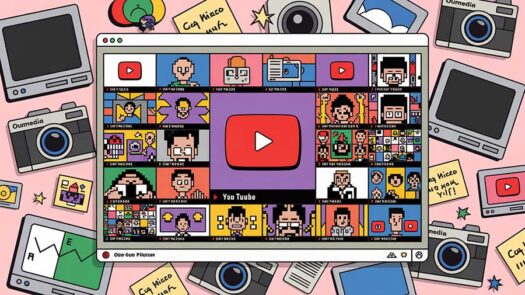The Internet Content Coalition drafts a set of guidelines to separate advertising from content
This column appeared Dec. 16, 1998, in the Online Journalism Review. Here’s the version on the OJR site.
Pick up a print magazine or newspaper and the rules are pretty simple: Ads over here, editorial over here. Sometimes the lines blur, but most often not.
On the Web, it gets murkier. Ads can appear anywhere on a Web page — sometimes smack in the middle of editorial content. Links? Well, there are links, and there are paid links. Buttons may transport you to a related story, or to a merchant. Advertising dollars may skew search engine results. Ads can be targeted to a specific story page, or to a particular user.
Rules of the road? It’s pretty much a crapshoot.
Enter the Internet Content Coalition. The nonprofit trade association, which has been waging the good fight to keep the Net self-regulated, includes such heavy hitters as the New York Times, Time Inc., MSNBC, ZDNet, CNet, Sony, Adobe, CBS Online, Warner Brothers Online and Playboy.
“All of us are concerned about how content is being perceived on the Web,” says ICC co-chair Christopher Barr, editor in chief of CNet, who’s heading up the group’s effort to draft a set of guidelines for online advertising. “We need to make clear to the user what’s being paid for and what’s not.”
Barr’s committee has hammered out a six-page draft that addresses a raft of thorny issues. The draft somewhat grandly calls on editorial-based companies and groups like the ICC “to lead the Internet industry in its development of an ethical conscience.”
Adds Barr: “A lot of people involved in the Internet business are not used to the same sorts of rules that old media like newspapers and magazines have lived with for decades.”
Amen to that. At far too many new media publications, the notion of erecting ethical firewalls just doesn’t register on the radar screen — not when online publishers are focused on staunching the river of red ink flowing from their Web sites.
I’ve heard umpteen stories about clueless consultants and marketing newbies who wonder aloud at meetings why advertorials need to be labeled, why paid links need to be disclosed, why promotions need to be treated differently than editorial content. It falls to the editorial folks to clear their throats and patiently explain that such practices would please advertisers and sponsors but might not help build trust with the readers. Sometimes, a light goes on, sometimes not.
Fortunately, many publishers realize that trust is a valuable business commodity. Over the long haul, you can’t tap users’ wallets if you don’t win their hearts and minds first — no matter what the medium.
“Whether it’s print, online or sandwich boards, ethics are ethics,” Barr says. “And it’s important for us to get these standards out of the way and build a strong foundation.” After the standards are in place, then comes the moral suasion to enforce them.
Unfortunately, Barr says, some steam has been has been taken out of the sails of these efforts because of a study last month indicating that 80 percent of online users trust online news as much as they trust newspapers, broadcast television and cable news. “It’s not on the ICC’s front burner anymore,” Barr laments.
The study, sponsored by Jupiter Communications, a new media research firm in New York, concluded that “nearly 70 percent of online news consumers polled are unconcerned about the objectivity of news sources that also sell goods online.”
But it would be a huge mistake for online publishers to interpret the Jupiter study as an all-clear signal suggesting that readers don’t care about niceties like establishing visual cues to separate truth from salesmanship.
For one thing, traditional news outlets are held in such low esteem that having 80 percent of the credibility of the mainstream media is nothing to boast about. For another, one wonders whether the public associates online news with CNN and ABCNews.com or with the quasi-news outlets such as search engines and small content sites with news channels where many of the sleights of hand are taking place.
Most importantly, the Jupiter study didn’t ask about practices on the Web that I suspect the public would reject — if they knew about them. Which is the whole point: There’s a lot of smoke and mirrors going on here.
Sophisticated Web users probably understand that the bullseye appearing at the top of a Lycos search page or the boldface listings that pop to the top of a CitySurf directory are paid ads. Fewer know that recommendations made by search engines and many content sites are based on money changing hands rather than editorial considerations. But as the Web becomes a mass medium, with tens of millions of users who aren’t hip to the game (like my mom or young nephew), we risk the danger that the Web will be seen as having all the credibility of one huge infomercial.
The ICC’s draft sets down guidelines for a wide range of behavior that goes to the heart of a Web publication’s credibility: advertorials; paid links; ads or promotions that appear in navigational sidebars; pop-up windows; sponsored pages; advertising sections; targeted ads.
The ICC has a chance to take up the guidelines at its Jan. 11 board meeting in San Francisco — or pass it along to a group that’s willing to embrace the issue of online credibility, such as the newly formed Online News Association.
Not everyone will embrace all the fine points of the draft. But at its core lay a clear-eyed set of principles based on a simple premise: disclose, disclose, disclose. “Almost anything goes, as long as the reader knows what’s going on,” Barr says.
Too often, users have no idea of the machinations occurring behind the digital curtain.
Postscript: ICC co-chair Christopher Barr invites comments from professional journalists and the public regarding the draft guidelines on online advertising.
Proposed ICC guidelines for presenting advertising online (draft)




